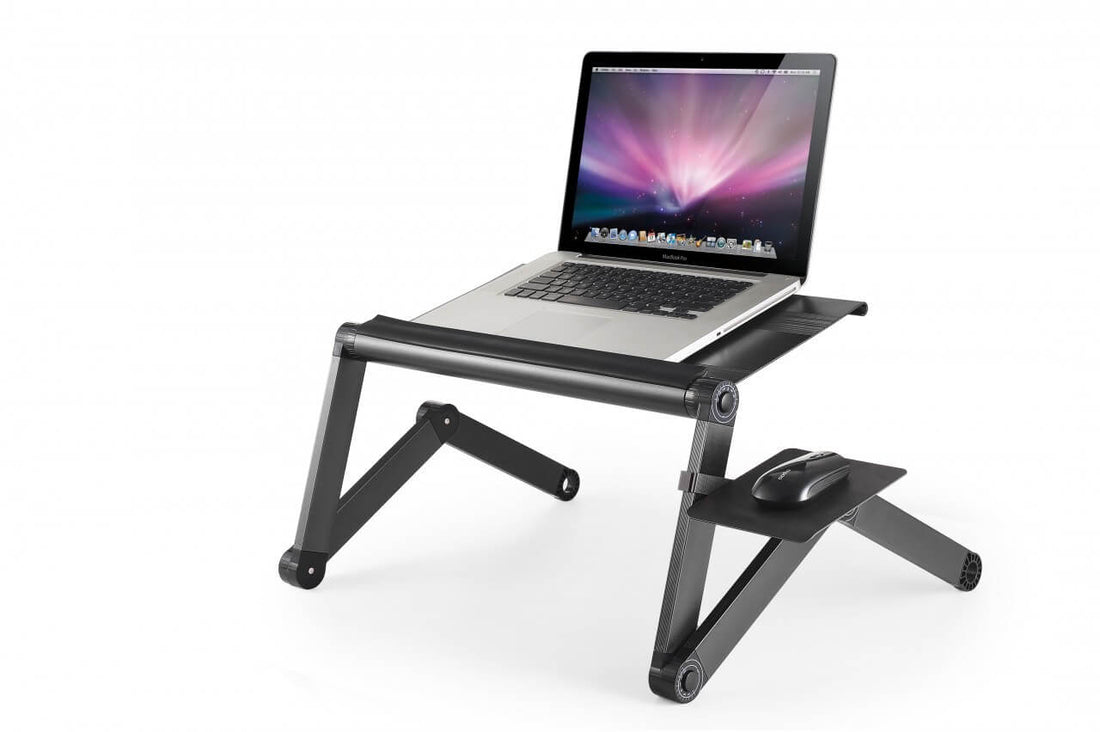Laptops represent a significant proportion of computer use in the United States. With annual sales of about 49.5 million laptops a year that's a lot of computer users doing their computing with workstations that could be damaging to their health.
Optimizing the ergonomics of your laptop workstation provides many health benefits. Learn how a laptop stand and other ergonomic products can benefit your life.
What's the Problem with Laptops?
Laptops are a fantastic business and home tool. They are light, convenient and portable. They provide many people with a flexible way of meeting their computing needs at home, work and in education.
With internet capability, a built-in keyboard and excellent screen technology they fill a niche between desktop computers and tablets. With so much in their favor, how can there be a problem with them?
The problem with laptops is that the compact design means that the screen and keyboard are attached to each other. When the screen is at the right position for comfortable use, the keyboard is too high. When the keyboard is in the best position for typing, the screen is too low for viewing.
Short term or infrequent use of a laptop is rarely a problem. Prolonged or frequent use of a laptop can be uncomfortable and lead to muscular-skeletal problems. Neck, back, wrist and hand injuries are potential risks.
Posture Tips
Many of the risks associated with using a laptop can be reduced with some simple thought about your posture. Make some simple adjustments to your sitting position and workstation to get a comfortable posture.
Your neck and your spine should be aligned. Ask somebody to look at your posture and check that your back and neck are not bent forward or sideways.
Your back should be relaxed and supported with comfortably relaxed shoulders. Don't have hunched or rounded shoulders.
Keep your elbows in, and check that they are bent at between 90 and 120 degrees. Your wrists and hands should not be bent or twisted. If your arms or wrists are not in these positions, you may not have your keyboard in the right position.
Occasional Users
Occasional laptop users don't need a conventional workstation. You may find that you can use a laptop on your lap, especially if you can sit upright or in a slightly reclined position. Place a thick binder under your laptop to help achieve the right wrist position.
Keep your neck comfortable. Raise your feet if it helps to achieve a comfortable thigh angle. Take regular breaks and don't work in this position for long periods.
Full-Time Users Use a Laptop Stand
More frequent and long-term laptop use requires better posture and some equipment.
The top of the screen should be at the same level as your eyes. Your keyboard and mouse should be at slightly below elbow height. This is no problem for a standard desktop computer but it's more difficult with a laptop.
Use a laptop stand to raise the screen height to eye level. Attach an external keyboard and mouse so that you can operate them at just below elbow level.
Work Safely
A few simple steps can help you make the most of a laptop's advantages. A laptop stand and an external keyboard are inexpensive accessories. They'll help you be productive and safe.
Read this great advice about using a laptop at a standing desk.




